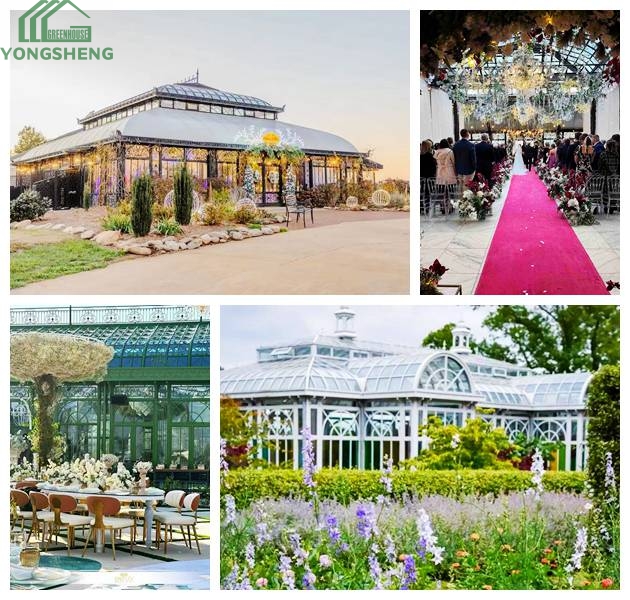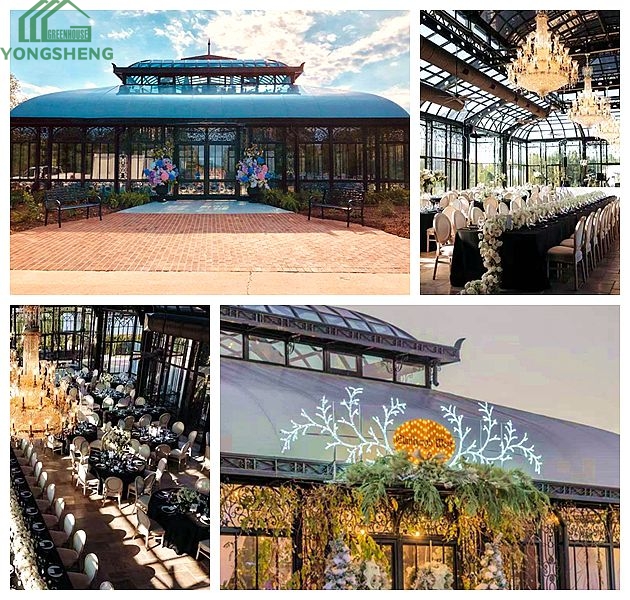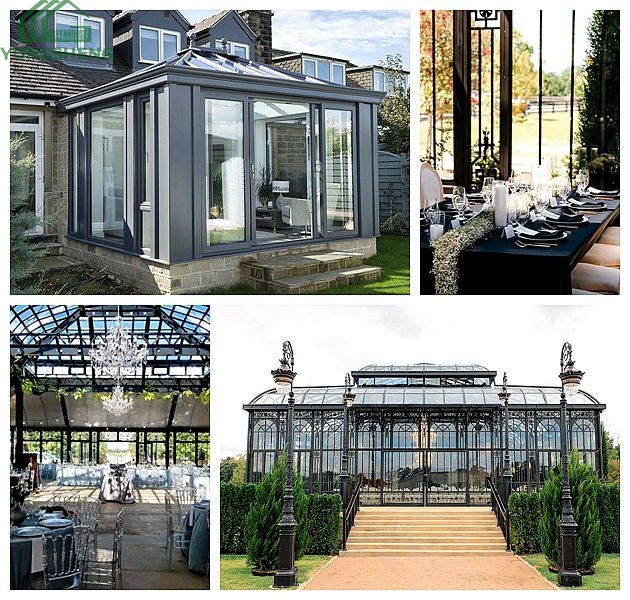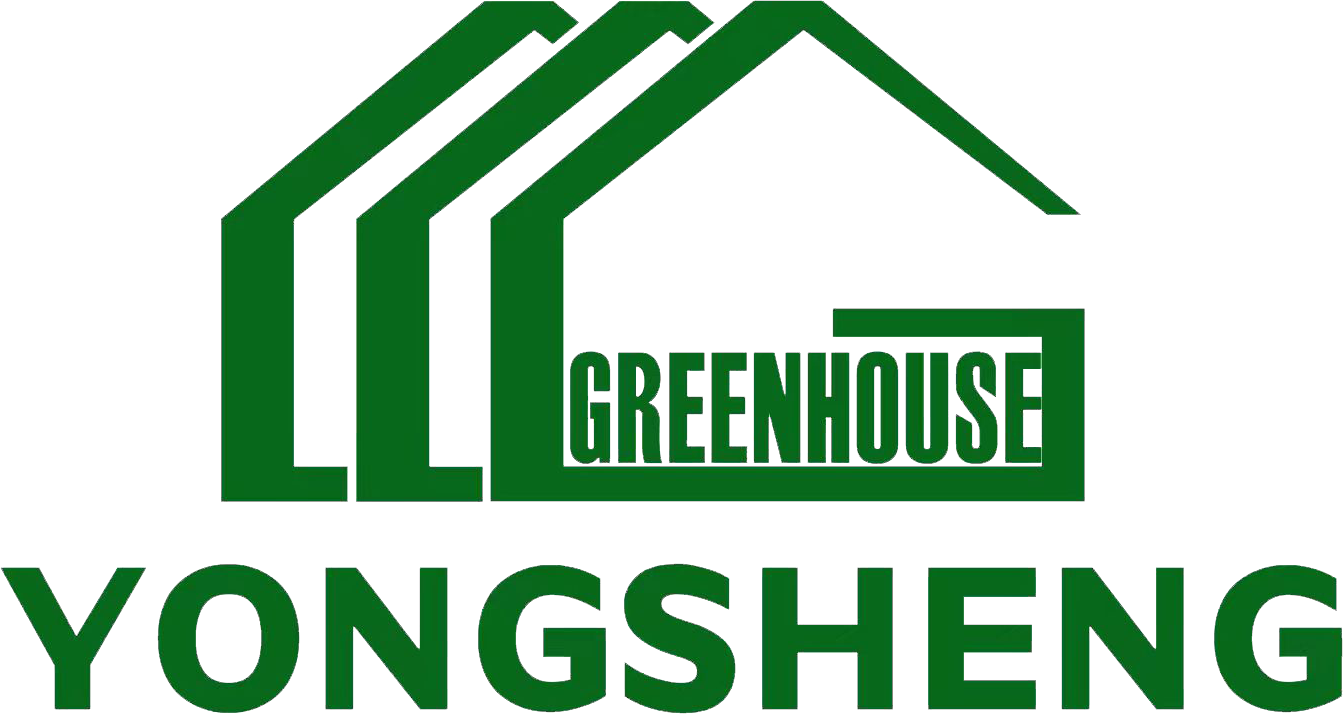
The Growth Logic Behind the Breakthrough of 300 Billion in the Scale of Greenhouse Market

The global greenhouse market has experienced unprecedented growth in recent years, with its scale surpassing the $300 billion mark. This remarkable achievement is driven by a combination of technological advancements, shifting consumer preferences, and the increasing demand for sustainable agricultural practices. Among the key contributors to this growth are the rising popularity of Victorian greenhouses, large greenhouses, and luxury greenhouses. These structures not only serve as functional agricultural spaces but also embody a blend of aesthetics, innovation, and environmental consciousness. In this blog, we will explore the growth logic behind this market breakthrough and delve into the unique appeal of Victorian, large, and luxury greenhouses.
1. The Rise of the Greenhouse Industry: A Global Perspective
The greenhouse industry has evolved from a niche agricultural practice to a cornerstone of modern farming. As the global population continues to grow, the demand for food production has surged, necessitating more efficient and sustainable farming methods. Greenhouses offer a controlled environment that maximizes crop yield, minimizes resource consumption, and reduces the impact of external factors such as climate change and pests.
The $300 billion milestone reflects the industry’s ability to adapt to changing market dynamics. From small-scale family farms to large commercial operations, greenhouses have become a vital tool for ensuring food security and promoting sustainable agriculture. The integration of advanced technologies, such as automation, IoT (Internet of Things), and AI-driven climate control systems, has further propelled the industry’s growth.
2. Victorian Greenhouses: A Timeless Appeal
Victorian greenhouses, inspired by the ornate glass structures of the 19th century, have emerged as a symbol of elegance and functionality. These greenhouses are characterized by their intricate designs, steep roofs, and decorative elements, which make them a popular choice for both hobbyists and commercial growers.
2.1. Aesthetic Value and Architectural Heritage
Victorian greenhouses are more than just agricultural spaces; they are architectural masterpieces that add a touch of sophistication to any setting. Their timeless design appeals to individuals who value aesthetics and wish to create a visually stunning environment for their plants. The combination of form and function makes Victorian greenhouses a preferred choice for botanical gardens, luxury estates, and high-end residential properties.
2.2. Versatility and Customization
One of the key reasons for the growing popularity of Victorian greenhouses is their versatility. These structures can be customized to suit a wide range of purposes, from growing exotic plants to serving as a tranquil retreat for relaxation. The availability of modern materials, such as durable aluminum frames and energy-efficient glass, has further enhanced their appeal.
2.3. Sustainability and Environmental Benefits
Victorian greenhouses align with the growing emphasis on sustainability. By providing a controlled environment, they enable growers to reduce water usage, minimize pesticide application, and extend the growing season. This makes them an eco-friendly solution for cultivating plants in a resource-efficient manner.
3. Large Greenhouses: Scaling Up for Commercial Success
Large greenhouses have become a driving force behind the expansion of the greenhouse market. These structures are designed to accommodate extensive crop production, making them ideal for commercial growers and agribusinesses.
3.1. Meeting the Demand for High-Volume Production
As the global population continues to rise, the need for high-volume food production has become more pressing. Large greenhouses offer a scalable solution that enables growers to produce significant quantities of crops year-round. By leveraging advanced technologies, such as hydroponics and vertical farming, these greenhouses can achieve higher yields compared to traditional farming methods.
3.2. Cost Efficiency and Resource Optimization
Large greenhouses are designed to optimize resource usage, reducing operational costs in the long run. Features such as automated irrigation systems, climate control, and energy-efficient lighting contribute to lower energy consumption and improved crop quality. This cost efficiency makes large greenhouses an attractive investment for commercial growers.
3.3. Supporting Local and Global Food Supply Chains
Large greenhouses play a crucial role in supporting both local and global food supply chains. By enabling the production of fresh, high-quality produce in urban and peri-urban areas, they reduce the need for long-distance transportation and minimize the carbon footprint associated with food distribution.
4. Luxury Greenhouses: Redefining the Concept of Green Living
Luxury greenhouses represent the pinnacle of innovation and design in the greenhouse industry. These high-end structures cater to discerning individuals who seek a harmonious blend of functionality, aesthetics, and sustainability.
4.1. Premium Materials and Craftsmanship
Luxury greenhouses are crafted using premium materials, such as tempered glass, stainless steel, and high-quality wood. The attention to detail and superior craftsmanship ensure that these structures are not only durable but also visually stunning. From sleek, modern designs to classic, ornate styles, luxury greenhouses offer a wide range of options to suit different tastes.
4.2. Smart Technology Integration
The integration of smart technology is a defining feature of luxury greenhouses. Automated climate control systems, remote monitoring, and energy-efficient lighting are just a few examples of the advanced features that enhance the functionality of these structures. This technology-driven approach allows growers to maintain optimal growing conditions with minimal effort.
4.3. Creating a Personal Oasis
Luxury greenhouses are more than just spaces for growing plants; they are personal oases that provide a sanctuary for relaxation and rejuvenation. Whether used as a private garden, a wellness retreat, or an entertainment space, these greenhouses offer a unique opportunity to connect with nature in a luxurious setting.
5. The Future of the Greenhouse Market: Trends and Opportunities
The greenhouse market is poised for continued growth, driven by several emerging trends and opportunities.
5.1. Urban Agriculture and Vertical Farming
As urbanization accelerates, the demand for urban agriculture solutions is on the rise. Greenhouses, particularly large and luxury models, are well-suited for urban environments, where space is limited. Vertical farming, which involves growing crops in stacked layers, is gaining traction as a space-efficient and sustainable farming method.
5.2. Emphasis on Sustainability and Eco-Friendly Practices
Sustainability will remain a key driver of growth in the greenhouse market. Consumers are increasingly prioritizing eco-friendly products and practices, prompting growers to adopt sustainable farming methods. Greenhouses, with their ability to reduce resource consumption and minimize environmental impact, are well-positioned to meet this demand.
5.3. Technological Innovations and Automation
The integration of cutting-edge technologies, such as AI, IoT, and robotics, will continue to transform the greenhouse industry. These innovations enable growers to optimize production processes, improve crop quality, and reduce labor costs.
5.4. Growing Interest in Home Gardening and Self-Sufficiency
The COVID-19 pandemic has sparked a renewed interest in home gardening and self-sufficiency. Victorian and luxury greenhouses, with their aesthetic appeal and functionality, are ideal for individuals looking to cultivate their own food and create a green space at home.
Conclusion
The breakthrough of the $300 billion mark in the greenhouse market is a testament to the industry’s resilience, innovation, and adaptability. Victorian greenhouses, large greenhouses, and luxury greenhouses have played a pivotal role in driving this growth, each offering unique benefits that cater to diverse consumer needs. As the world continues to grapple with challenges such as climate change, population growth, and food security, greenhouses will remain a vital tool for sustainable agriculture and green living. By embracing technological advancements and prioritizing sustainability, the greenhouse industry is well-positioned to achieve even greater milestones in the years to come.
Why Choose US?
- ● As the first manufacturer in China to introduce the Victorian conservatory design from Europe, we have 36 years of production experience since 1988, and our products are distributed in 68 countries.
- ● We have a professional team of 8 conservatory design engineers and 60 production workers. We are equipped with 2 hot-dip galvanizing machines, 2 steel shot blasting machines, and 1 spray line.
- ● Our professional design team can provide theoretical calculation data support for wind pressure resistance, earthquake resistance, and snow resistance of large-scale steel structure conservatories.
- ● Strict quality control. 8 inspection stages: raw material inspection, cutting and blanking size inspection, welding quality inspection, hot-dip galvanizing quality inspection, spray quality inspection, assembly quality inspection, and packaging quality inspection. Ensuring smooth assembly of the products, no rust, no leakage, and compliance with customer national standards.
- ● We cooperate with many well-known architectural design companies worldwide.
- ● Customized services. We can customize according to customer designs and dimensions. We also provide supporting facilities such as electric sunshades and air conditioners.
- ● We offer installation dispatch services, inspection services, and free replacement of parts. We also present high-value exquisite gifts.
- ● Video factory tour. You can view the entire production process.




